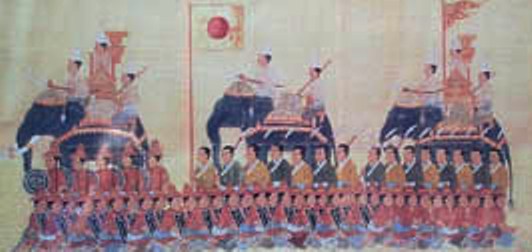I’ve said this many times before, but I believe it bears repeating: there seems to be a lack of childrens’ books written in Spanish. More narrowly, there seem to be few available Spanish books for toddlers beginning to read which were written in Spain. Commonly available books in the US for toddlers are usually translations from the English. The quality varies widely — some are unbearably bad. But all books, even short little fables designed for bedtime reading, encode a lot of social information in them that is not necessarily easy to translate. Which is good; that’s why you want to expose kids to other worlds, other languages, other cultures. But it means that the language that the book was originally written in, the cultural context to be grand about it, matters. So, for example, in the Spanish story El Verano (The Summertime), the entire contents of the text are as follows:
Cuando el Sol es feliz / y el campo es de muchos colores / y los frutos maduran / y las tiendas cierran / cuando la gente viaja / y el trigo es de color oro / y el sol es más rojo / y los niños van a la playa / y los barcos van al mar / cuando la sed es mucha / y el calor es más / Es Verano!
Which, roughly translated, is:
When the Sun is bright / and the fields are of many colors / and the fruit is ripe / and the stores close / when people travel / and the wheat is golden / and the sun is redder / and the children play at the beach / and the boats go down to the sea / when the thirst is great / and the heat is greater / It’s Summertime!
Almost every single time I read this story to my son, and I used to read it to him a lot, he asked me, “Why do the stores close?” This makes sense in Spain (well, sort of), but not in California. That’s what I’m looking for with books written in Spanish; I want that dislocation.
Even for a book like The Big Red Barn (which I’ve criticized in the past for being part of the nearly-dominant pastoral idyll idiom in children’s books) the translation at least yields the nugget that roosters in Spain say “kikiriki” instead of “cockle-doodle-doo.” Both of these ‘facts’ are nearly useless to a kid growing up in suburbia, true, but the point is that dislocation; even the roosters are different.
So, starting when my son was little, I’ve spent a fair amount of time looking around for good toddlers’ books in Spanish. I’m sure that I haven’t done a perfect job of it, but I have tried to find good Spanish books and it’s been a challenge. Now that my daughter is starting to read these books, my task is easier; I just walked over to my son’s room and pulled out all the Spanish books that I know worked for him. Even these, though, are mostly translations (primarily from the English, but also from Japanese, Catalan, and Gallego.)
So, here they are, in case anyone cares. They’re not listed in any particular order.
- El Auto Pequeño (The Little Auto)
by Lois Lensky, translated by Sandra Streepey
originally published in 1934; we have the 1968 edition inscribed “22 mayo 1970” in, I believe, my mother’s hand; very old fashioned but, obviously, a sentimental favorite
- Buenas noches, Sol; hola, Luna (Good Night, Sun, Hello Moon)
by Karen Viola, illustrated by Chi Yung
translated by Silvia Márquez
a nice sweet bedtime story about a rabbit; will not change the world, but fine
- El Gran Granero Rojo (The Big Red Barn)
by Margaret Wise Brown, illustrated by Felicia Bond
translated by Aida E. Marcuse
I really like this translation, a lot; I think it’s better than the original
- Buenas Noches, Luna
by Margaret Wise Brown, illustrated by Clement Hurd
translated by Teresa Mlawer
unlike the Big Red Barn translation, this one is awful; but kids love the story; a real chestnut
- Mi Libro de Cuentos Preferido (I Love My Little Storybook)
by Anita Jeram
translated by Antoni Cósimo
beautifully illustrated book, decent translation but the stories that it refers to are the northern European Aesop’s Fables kind
- Abuelos (Avós)
by Chema Heras, illustrated by Rosa Osuna
translated by the author from the original Gallego (!)
wonderful book; easily the best of this group; with lovely illustrations; someone ought to translate it into English; longish for a bedtime story
- Día de lluvia
Ana María Machado, illustrated by Francesc Rovira
translated (from Catalan?) by “Atalaire”
short imaginative story about children playing at home on a rainy day; cursive letters; part of a larger series
- Todos Hacemos Caca (Minna Unchi)
Taro Gomi
translated by Leopoldo Iribarren
translated from the original Japanese? Or from the English translation?
- La Castañera
Luz Orihuela, illustrated by Maria Ruis
- La Primavera
by Josep Ma. Parramón
illustrated by Asun Balzola
- El Verano
by Josep Ma. Parramón
illustrated by Carme Solé Vendrell
- El Otoño
by Josep Ma. Parramón
illustrated by Ulises Wensell
- El Invierno
by Josep Ma. Parramón
illustrated by Carme Solé Vendrell
These last four are a series of the four seasons by Josep Parramón with a different illustrator for each book; each is lovely; they’re brief little vignettes of the seasons. And my kids now know that wine is made from grapes in the autumn and that ‘golondrinas’ return in the springtime.


